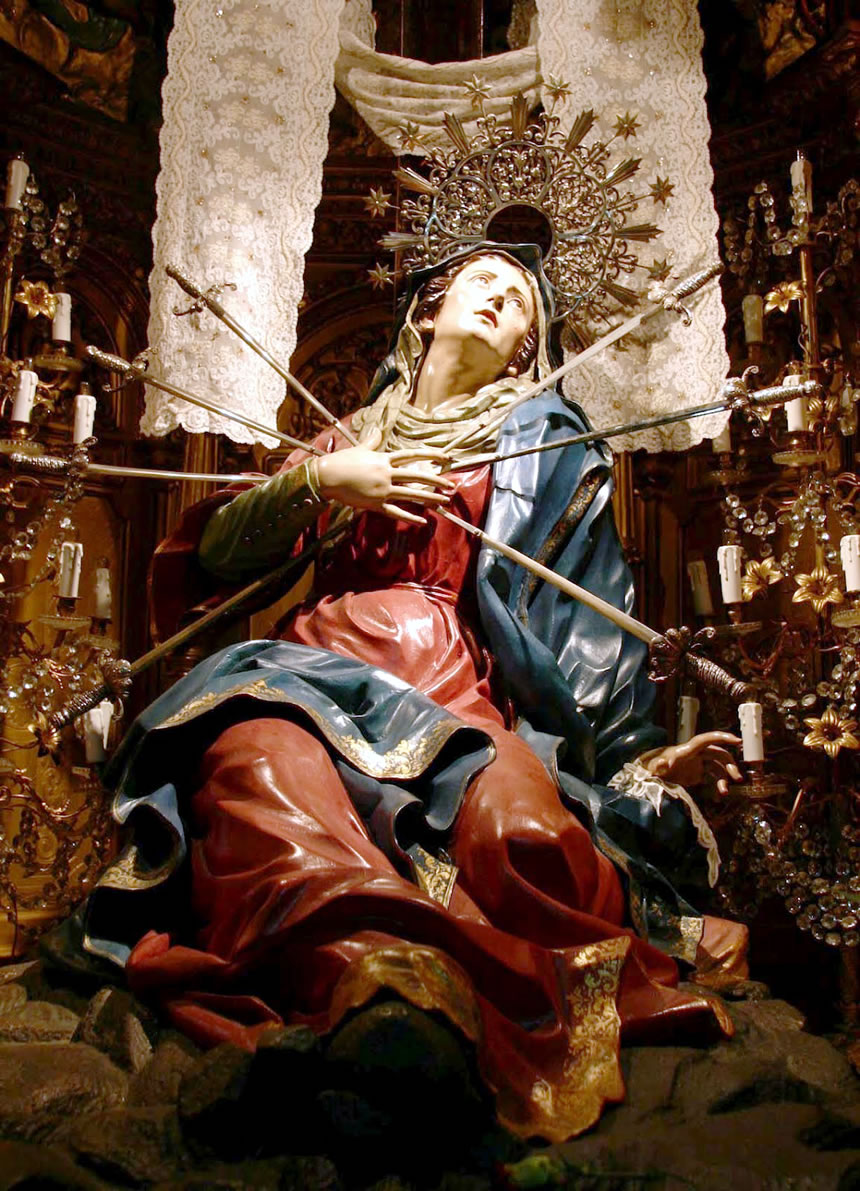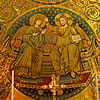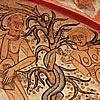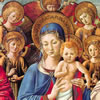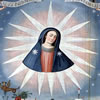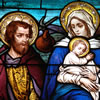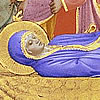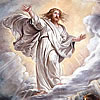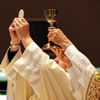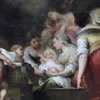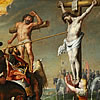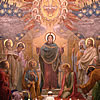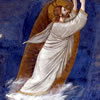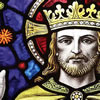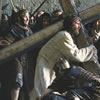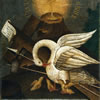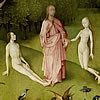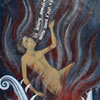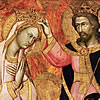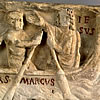Our Lady of Sorrows
Right after we celebrate the Feast of the Exaltation of the Cross, we celebrate the Feast of Our Lady of Sorrows.
The gospel reading for this day recounts Mary at the foot of the cross. It fulfills the prophecy of Simeon when Mary brought Jesus to the Temple. He said, “your own soul a sword shall pierce.” Those that study Mary’s life count seven swords or sorrows starting with that of Simeon’s prophecy. The next sorrow is when she had to escape with Joseph to Egypt, fleeing from the assassins of King Herod. The third is when she lost Jesus in the Temple – one can only imagine her worry as a mother. The fourth is when she met Jesus as he carried the cross. Fifth is his crucifixion and death. As if his death were not enough, a soldier had to pierce his side – which is the sixth sorrow. Finally, the last sorrow is the burial of Christ – the definite moment when she had to physically detach herself from the person she dearly loved.
We must ask ourselves why Mary had to suffer. Since suffering was seen by her culture as a punishment for sin, she shouldn’t suffer at all because we believe Mary was conceived without original sin, and the Holy Spirit protected her from sin her whole life. And yet we find her grieving like no other has grieved upon seeing her son crucified.
We wonder what she did to merit her sorrows. The answer is nothing. The reason why she suffered is that she is a disciple of Christ, and anyone who follows him must suffer. Didn’t he tell his disciples, “follow me”?
The rosary reminds us that after the joyful and luminous are the sorrowful mysteries that we too must navigate before going into glorious mysteries. For fallen humanity, this earth is not heaven, and suffering is an integral part of it. Christ did not save us from suffering but through it.
So we celebrate the feast of Our Lady of Sorrows because she is our model so that, like her, we plant ourselves at the feet of the crucified Christ. For it is there we can find him sharing our suffering, and us sharing his. Without this, suffering just becomes an unpleasant experience. With Christ, it is mystical.
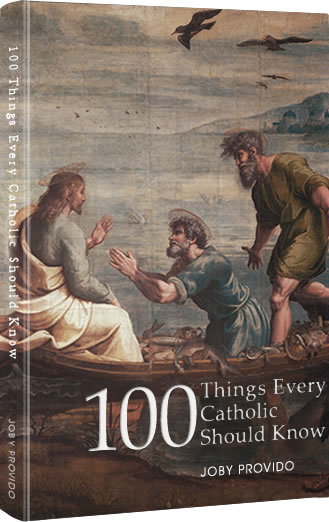
100 Things Every Catholic Should Know
Whether or not you are new to the Catholic Church, or struggling, or lapsed, or dynamically involved, this book will enlighten you with the essentials of the Faith that have been handed down to us by the apostles.
Each of the 100 topics is easy to read and distilled into bite-sized portions. Through cross-referencing, the book also shows how the topics are interrelated. Those who are new to the Faith will find this book an edifying handy reference, and those who have simply forgotten will find it a great review material that might spark a new love for God and religion.
Get your copy now either in Hardbound, Paperback, or Kindle
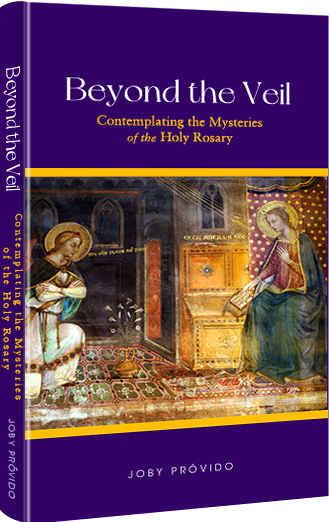
Beyond the Veil
Contemplating the Mysteries of the Holy Rosary
Prayer giants like Pope St. John Paul II, Pope Paul VI, Bl. Archbishop Fulton Sheen, and Bishop Robert Baron advocate that we contemplate on the mysteries of the rosary while we say the vocal prayers. Unfortunately, there are not many books that teach us how to do this. Beyond the Veil comes to the rescue by suggesting seven ways we can pray the rosary the way it was intended.
The larger part of the book offers mental images for each of the mysteries we can use in our contemplation, for how can we imagine the scenes in the rosary if we don't know about them?
Get your copy now either in Hardbound, Paperback, or Kindle
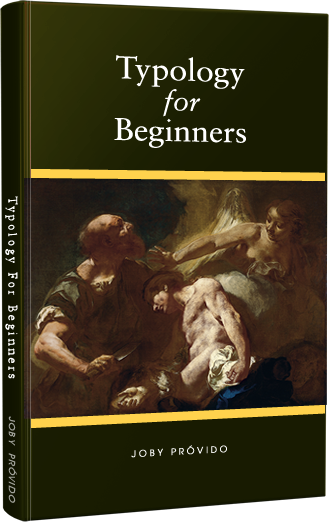
Typology for Beginners
A Catholic Perspective on understanding the New Testament through the Old Testament
First-century Jews converted to Christianity in droves because of the way the New Testament was written to show Jesus was the Messiah promised by the Old Testament. We also learn about how Mary is the New Eve and the Ark of the Covenant in the way the writers portray her.
Through typology, the patterns that connect the Old and New Testaments make the Bible stories more accessible so that one becomes excited to read Sacred Scripture again.
Get your copy now either in Hardbound, Paperback, or Kindle
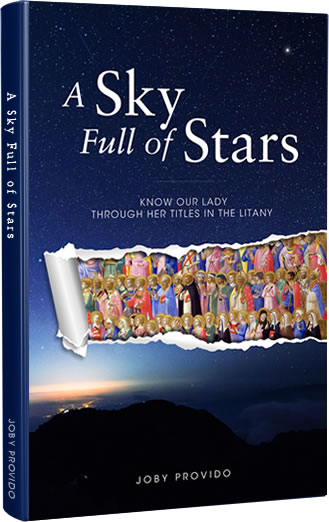
A Sky Full of Stars
Know Our Lady through her Titles in the Litany
The Church helps us understand who Mary is by honoring her with different titles in the Litany of the Blessed Virgin Mary. Unfortunately, over time and difference of culture, we might not grasp what it is the Church is ascribing to her and lose that opportinity to get to know her.
In A Sky Full of Stars, each title of the Litany is explained so we get know Mary more and fall in love with her all over again.
Get your copy now either in Hardbound, Paperback, or Kindle


